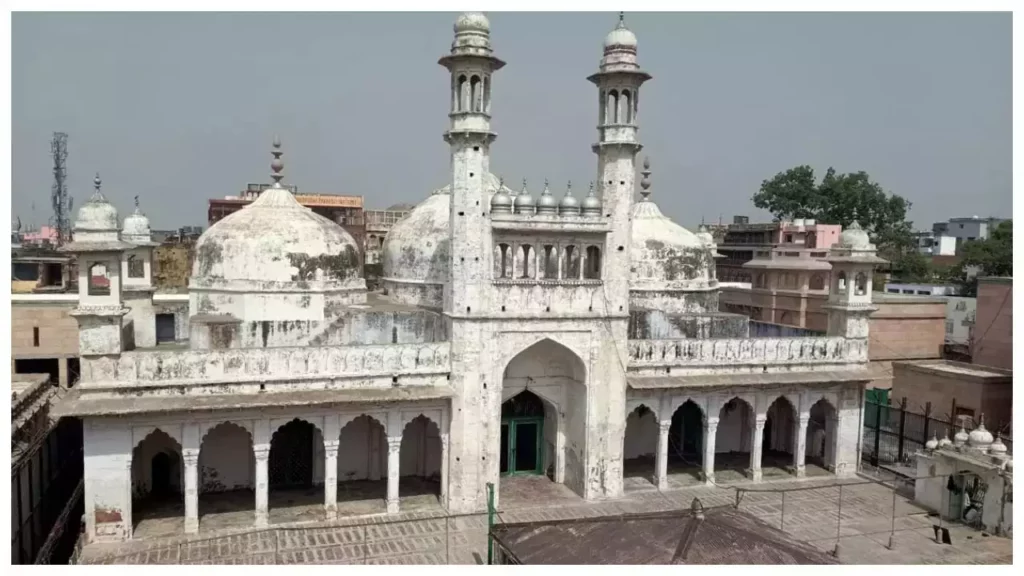
The work of surveying the Gnanabapi Masjid in Varanasi, Uttar Pradesh will remain suspended tomorrow and Thursday as well. Allahabad High Court Chief Justice Pritinkar Dibakar gave this order on Wednesday afternoon.
The Chief Justice said that this case will be heard again at 3:30 pm on Thursday. The Archaeological Survey of India (ASI) has been asked to explain why there is no risk of damage to the mosque premises during the survey. For that, he ordered to present an officer of the organization in the assembly.
The District Court of Varanasi had issued an order to survey the mosque.
ASI was given that responsibility. ASI started that work last Monday morning. Against this, the mosque administration “Anjuman Intezamiya Mosque” appealed to the Supreme Court. The Supreme Court issued an order to stay the mosque survey work till 5 pm on Wednesday and asked the mosque authorities to file an appeal in the Allahabad High Court.
The risk of damage to the mosque due to survey work was raised in the Chief Justice’s court on Wednesday as on Tuesday. SFA Naqvi, lawyer of Anjuman Intezamiya Mosque authority expressed that apprehension and said that the petitioners admitted in the lower court that they do not have any evidence of the presence of idols of Hindu gods and goddesses in the mosque premises. They requested the ASI to find that evidence. It can’t be done. No one else can be entrusted with the task of finding evidence. It is illegal.
The lawyer said, while doing so, the ASI will excavate the mosque premises. This old mosque may collapse.
This mosque is one thousand years old.
In response to lawyer Naqvi’s apprehension, the Additional Solicitor General on behalf of the ASI said that for the time being they will conduct a survey using the ‘Ground Penetrating Radar’ (GPR) method. Excavation can be done later if needed. The GPR system is much like a lawnmower, according to Azlas.
The Chief Justice was not sure what exactly the ASI was trying to do with the survey and that there was no risk of any damage to the mosque. Rather, he expressed serious doubts. Want to know whether they have done such work before or not? Do you have any pictures of him?
As the doubts persisted, the Chief Justice directed the Additional Solicitor General to produce an ASI official from Varanasi by 4.30 pm to explain the survey procedure to him.
The Supreme Court bench of Chief Justice DY Chandruchud
Justice GB Pardiwala and Justice Manoj Misrar asked the mosque authorities to file a petition in the Allahabad High Court while hearing the case last Monday. Along with that, the work of the mosque survey was postponed till 5 pm on Wednesday.
Advocate Hufeza Ahmadi, representing the mosque authorities, told the Supreme Court that the ASI will excavate the mosque premises while carrying out the survey. This 1000-year-old mosque may collapse. Although the ASI had claimed, the way they would conduct the survey, there was no danger of any damage to the mosque. The Solicitor General assured the Supreme Court last Monday that not a single brick has been removed. No excavation will be done for at least a week.
Hindutva claims that the Gnanabapi Masjid near the Kashi Vishwanath temple in Varanasi was built by destroying the Hindu temple. They look forward to proving the truth of that claim. They claim that there are statues of Hindu gods and goddesses on the walls of the mosque. A case is also going on for the demand of daily worship of that idol.
Hindus claim to have found a ‘Shivalinga’ in the mosque premises. Muslims claim that it is the mouth of the mosque’s ablution fountain. Hindus have been demanding carbon dating tests to determine the age of the ‘Shivalinga’
Is Gnanabapi Masjid going to be another Babri Masjid?
After the video survey of the Gnanabapi Masjid near Vishwanath Temple in Kashi, Varanasi was completed smoothly, the eyes of the country are now on the Supreme Court. Tomorrow Tuesday, the Supreme Court bench of Justice DY Chandrachud and Justice PS Narasimha will decide whether the video survey work violates the law and whether Hindus will have the right to worship there throughout the year.
The three main places of worship of Indian Hindus are controversial. Birthplace of Rama in Ayodhya, Vishwanath Temple in Kashi, and Birthplace of Lord Krishna in Mathura. The reason for the controversy is the location of three mosques in three places of worship. Hardline Hindus claim that the mosques were built there by Muslim rulers in ancient times, changing the character of the three places of worship. Babri Masjid at the birthplace of Ram in Ayodhya, Gnanabapi Masjid in Kashi with Vishwanath Temple.
Shahi Eidgah Mosque in Mathura at the birthplace of Lord Krishna.
Since the beginning of Ayodhya’s ‘Mukti Andolan’ in the late 1980s, various Hindutva organizations with the BJP have said that their main goal is to make these three places of worship ‘masjid-free’. Before the demolition of the Babri Masjid in 1992, the slogan was raised, ‘Avi Sirf Ayodhya Hai, Kashi-Mathura Baki Hai’. That is, now Ayodhya is being liberated. Later Kashi and Mathura will be free. The Gnanabapi Masjid survey is a step in that effort.
Huzefa Ahmadi, the mosque committee’s lawyer, approached the Supreme Court saying that the order of the survey, which was given by the Civil Court in Varanasi, was clearly against the Central Places of Worship Act, 1991. Applying to stop the survey on May 13 in the Supreme Court Chief Justice NV Raman’s bench, he said that the survey should be stopped immediately. Because it is violating the Places of Worship Act 1991.S